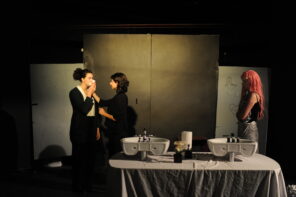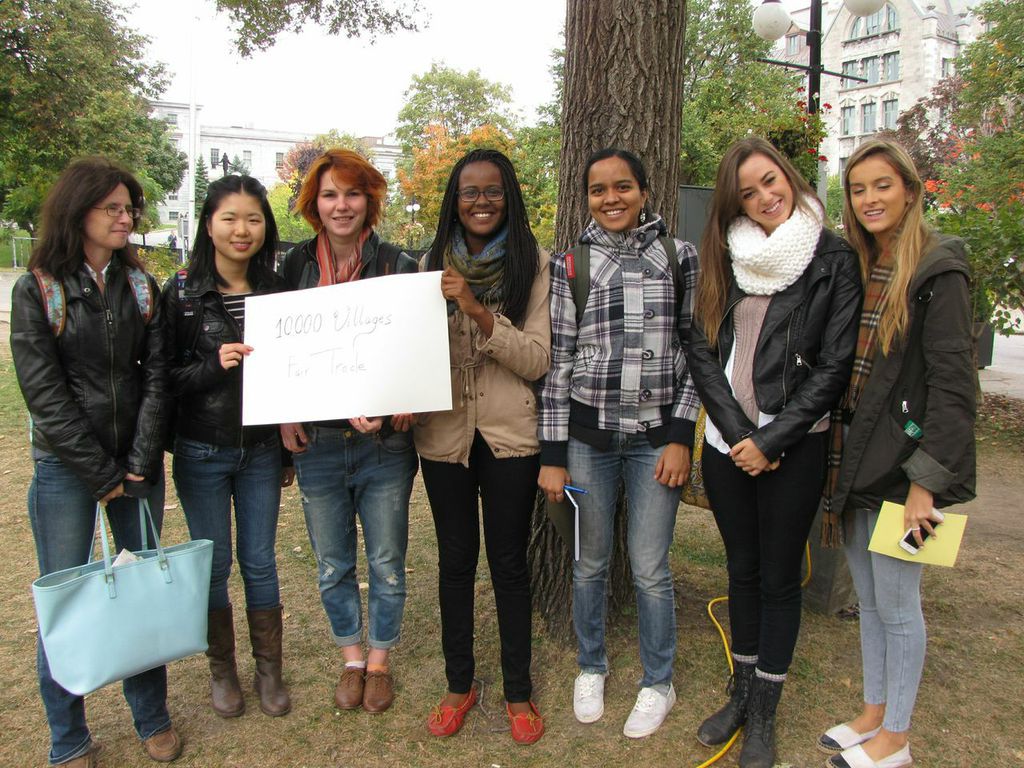On Saturday November 13th, 100 audience members gathered from 11AM to 6PM at L’Astral in Montreal to watch a series of 13 speakers share what the concept of illumination means to them. The international panel of speakers was brought together by Illuminate—a public and independently organized TEDx event by TEDxMcGill. As the title suggests, the theme of Illuminate was to reflect on what the concept of illuminations means following a difficult year of uncertainty. Throughout the event, audience members heard 13 unique interpretations of illumination, influenced by each speaker’s passions, profession, and life stories.
As the title suggests, the theme of Illuminate was to reflect on what the concept of illuminations means following a difficult year of uncertainty.
Jonathan Spencer set the stage by describing a typical stroll through the city. He pointed out that, although the average person is likely to notice the art around them, one rarely questions its meaning. Jonathan then introduced ArtworxTO, a project that maps and offers interactive ways to explore the public art around Toronto, which he believes is instrumental to appreciating the hidden messages of city artwork.
Laurence Liang, an Engineering student at McGill, argues that the falling costs of bioengineering, increased access to patient data, and developments in AI will expand medical innovation beyond the confines of expensive laboratories. Laurence believes that the rapid pace of medical innovation is illuminating a path to a future where people can cure incurable diseases from the comfort of their own homes using increasingly user-friendly software interfaces.
Laurence believes that the rapid pace of medical innovation is illuminating a path to a future where people can cure incurable diseases from the comfort of their own homes.
In a similar vein as Laurence, Trevor Cotter sheds light on the growing impact of technology on medical applications. Trevor is a PhD candidate in Mechanical Engineering and works on developing physics-based simulators that allow spinal surgeons to practice surgery. By mimicking the texture of muscle tissue, bone and nerves with robotics, this technology would allow surgeons to hone their surgical skills before they enter the operating room. Trevor highlights the importance of his work with a single question: when you or a loved one enters the operating room, would you rather this be the hundredth time, or the first time your surgeon operates?
Ida Derish, a PhD candidate at the department of Experimental Surgery at McGill University and a medical entrepreneur, begins her talk by illustrating how current methods to test heart disease medication are inefficient. Instead of using a one-size-fits all approach, Ida advocates for patient-specific heart disease treatment, made possible by her innovative research. By drawing blood from patients and deriving stem cells from their samples, Ida is able to grow human heart cells in her lab, where the effects of medication can be uniquely tested on a patient’s heart cells. Ida’s research is revolutionizing cardiovascular disease treatment, and she is convinced it will light the way for future advances in medicine.
In his talk, Naeem Komeilipoor, a well-versed scientist with backgrounds in neuroscience, biomedical engineering and artificial intelligence, asks the audience a series of questions: Can you imagine controlling technology with your thoughts? Or perhaps being able to speak to everyone on the planet in their native tongue? Or what about uploading any file of information into your brain? Although the answers to these questions may seem out of reach, Naeem believes that the future of innovation lies at the intersection of technology and neuroscience, where external devices, such as a pair of glasses or a headset, will allow us to perform these very tasks. Naeem drives his point home by demonstrating examples of neurotechnologies used today such as the cochlear implant, a device used by deaf people to hear, and bionic limbs, which allow humans to control their robotic appendages with their mind.
The talks discussed so far revealed illuminations in knowledge and innovation that will change lives for the better, but Dr. Alexandra Simond’s speech showcased that illumination does not always reveal good things.
The talks discussed so far revealed illuminations in knowledge and innovation that will change lives for the better, but Dr. Alexandra Simond’s speech showcased that illumination does not always reveal good things. Dr. Simond is a McGill graduate, science educator and researcher. In her talk, she disclosed an event that happened to her at her research lab when her experiment’s groundbreaking results were not taken seriously by her supervisor. For over a year, Dr. Simond battled for her results to be published, but her ideas weren’t taken into account until a male coworker presented similar findings of his own. By sharing this experience, Dr. Simond hopes to shed light on the obstacles and double standards women face in science and by doing so, advocate for their place in academia.
This article showcased a select number of speakers, most of whom believe illumination is synonymous with innovation, but TEDxMcGill’s Illuminate featured many other interpretations of the concept as well. Whether it be by writing a book, overcoming an autoimmune disorder, or being thrown into a pool by your friends, the speakers shared the common message that illumination is the process of discovering something new. By presenting a diverse range of speakers, whose talks highlighted both positive and negative aspects of illumination, TEDxMcGill succeeded at transmitting an all-encompassing and well-balanced definition of Illuminate.








